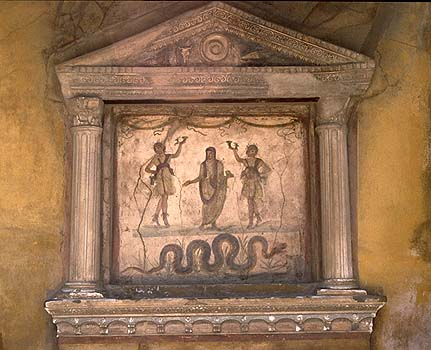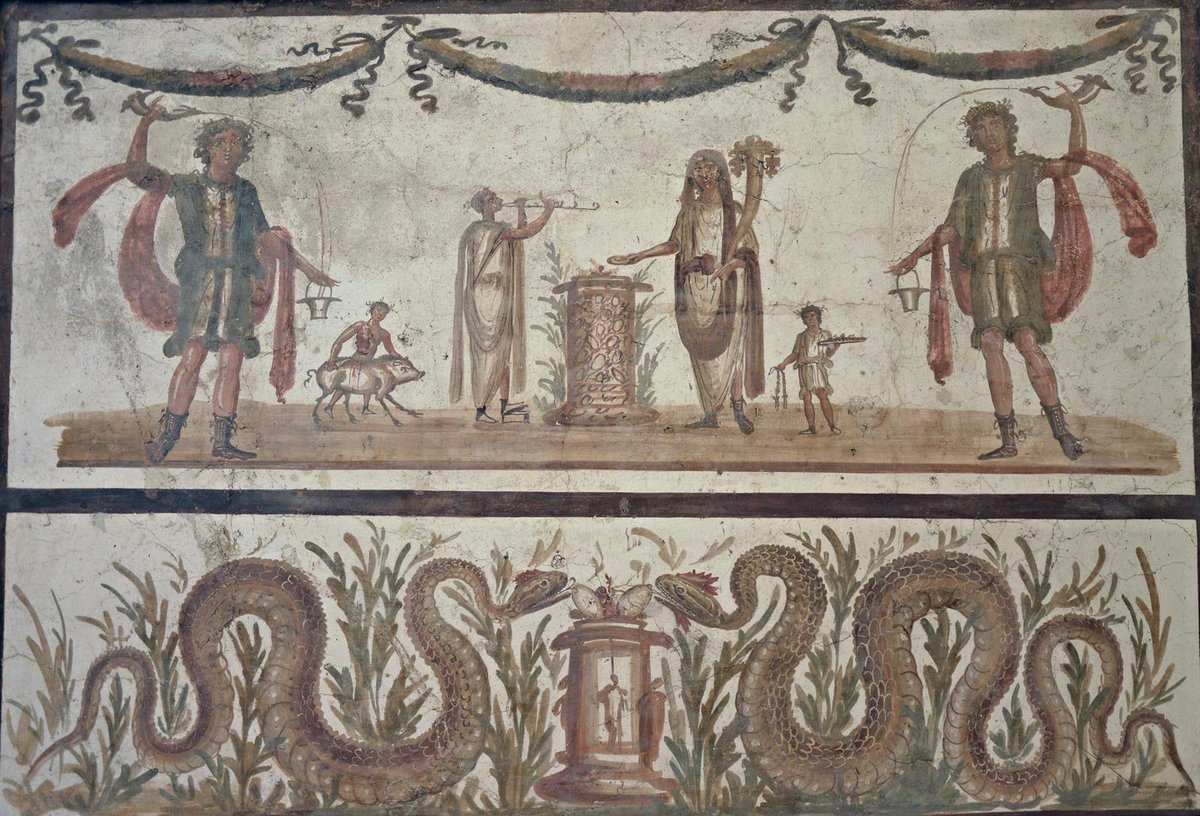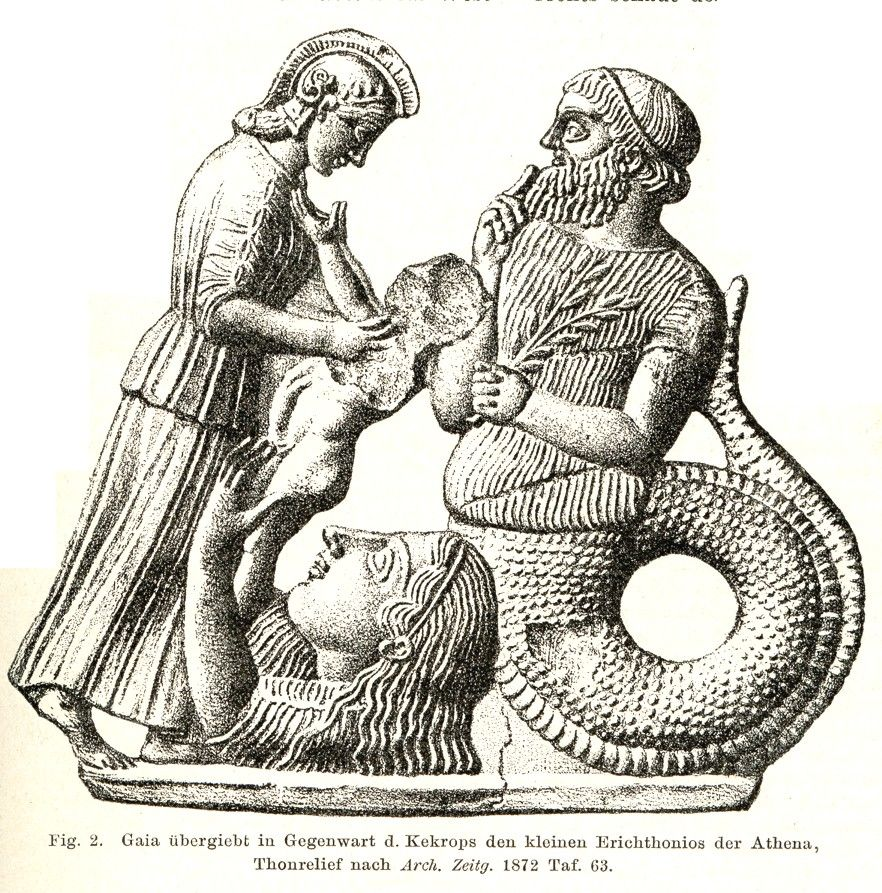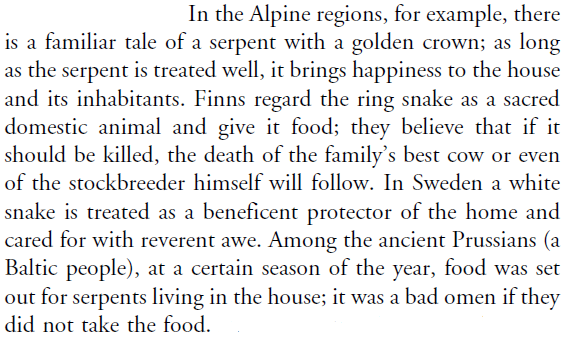(Edited from M. Lurker's "Snakes" entry in "Encyclopedia of Religion")
"It is likely that representations of serpents on monoliths from the Neolithic age France [or Iberia] were connected with the veneration of ancestors."
"It is likely that representations of serpents on monoliths from the Neolithic age France [or Iberia] were connected with the veneration of ancestors."
"In the Mediterranean world a snake living in the house embodies the soul of family’s first ancestor; for the Romans the serpent embodied the paterfamilias. Murals at Pompeii show vipers protectively surrounding an altar as symbols of the genius loci, tutelar deity of the place."
"In Greece, ancestors such as Kekrops and Erechtheus, who had been transformed into heroes, were venerated in the form of serpents. A serpent and a vessel on ancient Greek tombstones depicts a libation to the dead."
As well as a mountain-dweller (ie tomb-dweller) hoard-keeper:
"In central Europe there are still place-names (eg, Drachenfels, “dragon-rock”) that allude to local sagas built around the idea of a Lindwurm (from the Old Norse linn-ormr, “serpent-dragon”) who protects a treasure."
"In central Europe there are still place-names (eg, Drachenfels, “dragon-rock”) that allude to local sagas built around the idea of a Lindwurm (from the Old Norse linn-ormr, “serpent-dragon”) who protects a treasure."

 Read on Twitter
Read on Twitter![(Edited from M. Lurker's "Snakes" entry in "Encyclopedia of Religion")"It is likely that representations of serpents on monoliths from the Neolithic age France [or Iberia] were connected with the veneration of ancestors." (Edited from M. Lurker's "Snakes" entry in "Encyclopedia of Religion")"It is likely that representations of serpents on monoliths from the Neolithic age France [or Iberia] were connected with the veneration of ancestors."](https://pbs.twimg.com/media/Ee0euWcWAAAFo1D.png)
![(Edited from M. Lurker's "Snakes" entry in "Encyclopedia of Religion")"It is likely that representations of serpents on monoliths from the Neolithic age France [or Iberia] were connected with the veneration of ancestors." (Edited from M. Lurker's "Snakes" entry in "Encyclopedia of Religion")"It is likely that representations of serpents on monoliths from the Neolithic age France [or Iberia] were connected with the veneration of ancestors."](https://pbs.twimg.com/media/Ee0eyl1WsAAKEtH.png)







